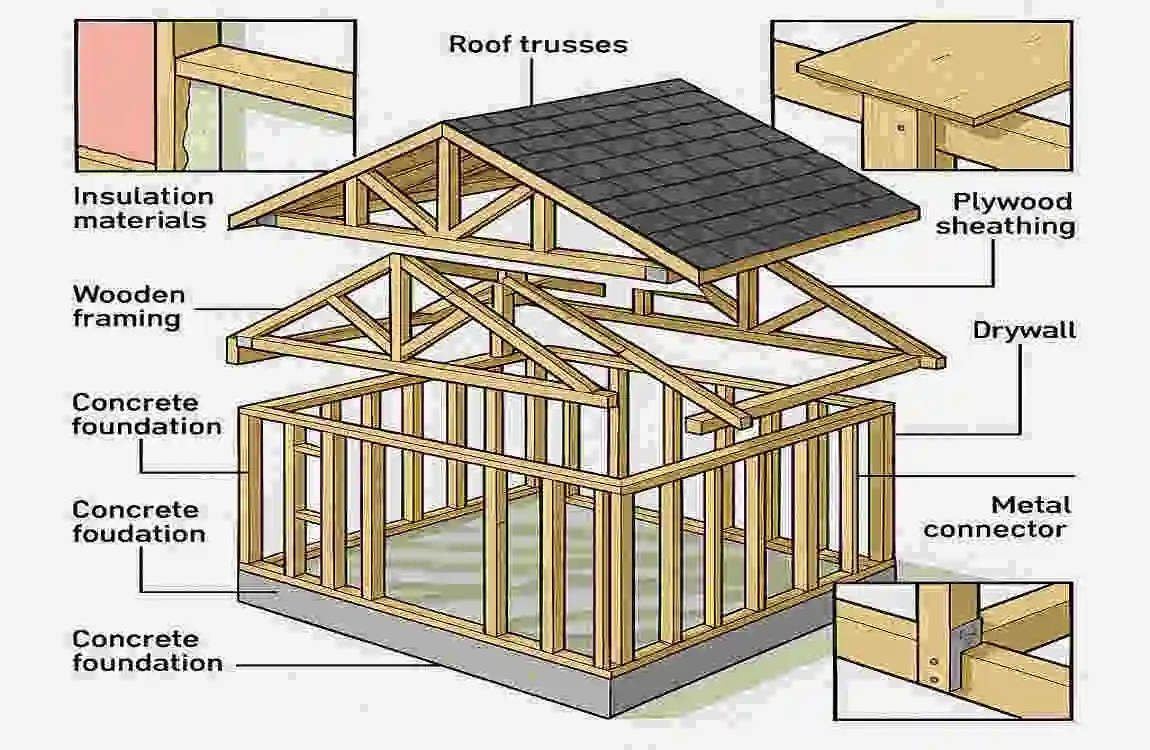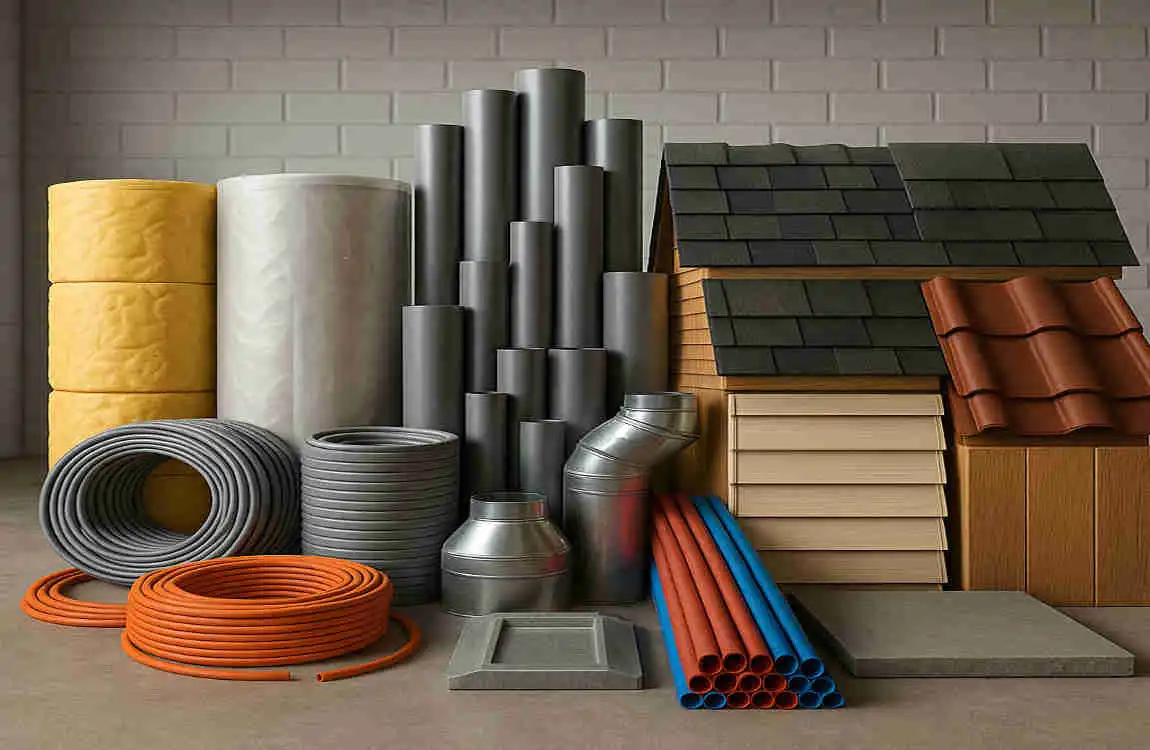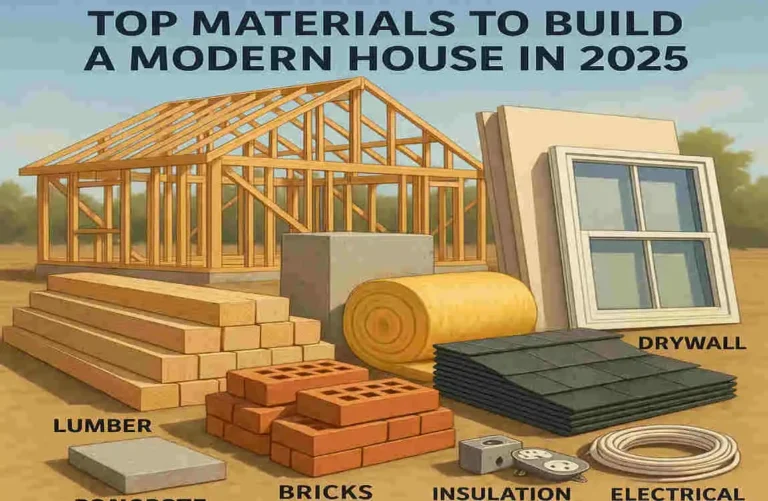Building a house is one of the most significant investments you’ll ever make. Whether you’re constructing your dream home or a property for resale, understanding the materials needed to build a house is crucial. The right materials not only ensure durability and safety but also help you stay within budget while meeting modern sustainability standards.
Why Knowing the Right Materials Matters
The Importance of Material Quality
The materials you choose directly impact the durability, safety, and longevity of your home. High-quality materials ensure that your house can withstand environmental factors, such as weather, earthquakes, and wear and tear over time. On the other hand, poor-quality materials can lead to structural issues, costly repairs, and even safety hazards.
Balancing Cost and Quality
In 2025, the construction market is seeing rising costs due to inflation and supply chain challenges. However, opting for cheaper materials to save money upfront can lead to higher maintenance costs in the long run. Striking the right balance between price and quality is essential.
Sustainability and Environmental Impact
Sustainability is no longer optional—it’s a necessity. Many homeowners are now prioritizing eco-friendly materials that reduce carbon footprints and promote energy efficiency. Materials such as recycled bricks, bamboo, and green concrete are gaining popularity due to their environmental benefits.
Core Structural Materials Needed to Build a House

The foundation of any house lies in its structural materials. These materials form the backbone of your home, ensuring stability and strength.
Cement
Cement is the most critical construction material. It’s used in the foundation, walls, and structural elements, such as beams and columns.
- Types of Cement: The most commonly used types are Ordinary Portland Cement (OPC) and Sulfate Resistant Cement (SRC). OPC is versatile and widely used, while SRC is ideal for areas with high sulfate content in the soil.
- Price Trends: In 2025, the average price of cement in Pakistan ranges between PKR 1,400 and 1,470 per bag.
- Tips for Buying: Always check the manufacturing date and ensure the cement is stored in a dry place to maintain its quality.
Steel
Steel is essential for reinforcing concrete structures, providing the tensile strength needed to withstand loads.
You may also read (what is an oast house and its historical significance).
- Role in Construction: Steel bars, especially Grade 60 steel, are used in beams, columns, and slabs to enhance structural integrity.
- Price Trends: The cost of steel in 2025 is around PKR 250,000 to 260,000 per ton.
- Quality Check: Ensure the steel is free from rust and meets industry standards for strength and durability.
Bricks
Bricks are the primary material for constructing walls and partitions.
- Types of Bricks: Class A or Awwal quality bricks are preferred for their strength and uniformity.
- Pricing: The cost of bricks ranges from PKR 16,000 to 18,000 per 1,000 bricks.
- Innovations: Alternatives such as fly ash bricks and hollow blocks are gaining traction due to their eco-friendliness and insulation properties.
Sand and Aggregates
Sand and aggregates are crucial for concrete and plastering work.
- Types of Sand: Ravi sand is ideal for plastering, while Chenab sand is preferred for concrete work.
- Aggregates: Crushed stone (e.g., Margalla crush) is used in reinforced cement concrete (RCC) for added strength.
- Selection Tips: Ensure the sand is clean and free from impurities, and choose aggregates with consistent size and shape.
Additional Essential Materials for Building a House

Beyond the core structural materials, several other components are vital for completing your home.
You may also read (step by step guide to rewiring your home).
Wood and Timber
Wood is used in framing, roofing, doors, and windows.
- Types of Wood: Hardwood, such as teak, and engineered wood products are popular choices.
- Sustainability: Opt for certified wood to ensure it’s sourced responsibly.
- Durability: Treat wood with anti-termite solutions to enhance its lifespan.
Roofing Materials
The roof protects your home from external elements and plays a significant role in insulation.
- Popular options in 2025 include architectural shingles and standing seam metal roofing, which are trending due to their durability and aesthetic appeal.
- Weatherproofing: Ensure the roofing material is resistant to water, wind, and UV rays.
- Cost and Lifespan: Metal roofs are more expensive upfront but last longer than traditional shingles.
Plumbing and Electrical Materials
These materials ensure the functionality and safety of your home.
- Plumbing: Pipes, fittings, and fixtures should be corrosion-resistant and durable.
- Electrical: Use energy-efficient wiring and modern circuit breakers to enhance safety and reduce energy consumption.
- Eco-Friendly Options: Consider installing low-flow plumbing fixtures and using LED lighting for enhanced sustainability.
Flooring Materials
Flooring impacts the aesthetics and comfort of your home.
| Flooring Type | Durability | Maintenance | Cost (per sq. ft.) |
|---|---|---|---|
| Hardwood | High | Moderate | $8–$15 |
| Engineered Wood | Medium | Low | $6–$12 |
| Tiles | High | Low | $5–$10 |
| Luxury Vinyl Plank | Medium | Low | $4–$8 |
| Carpet | Low | High | $3–$7 |
Fixtures and Finishes
Fixtures and finishes add the final touches to your home.
- Kitchen and Bathroom: Invest in durable sinks, faucets, and cabinets that strike a balance between style and functionality.
- Eco-Friendly Options: Look for water-saving faucets and energy-efficient appliances.
Cost Considerations and Budgeting for Materials in 2025
Average Construction Costs
The average cost of building a house in 2025 ranges from $100 to $500 per square foot, depending on location, design, and material choices.
Budgeting Tips
- Plan Ahead: Create a detailed budget that includes all material costs.
- Prioritize Quality: Avoid cutting corners on essential materials, such as cement and steel.
- Regional Variations: Material prices can vary significantly by region, so sourcing locally when possible can help save on transportation costs.
Sustainable and Innovative Materials to Watch in 2025
Emerging Eco-Friendly Materials
- Recycled Bricks: Made from construction waste, these bricks reduce landfill waste.
- Green Concrete: Incorporates recycled materials and reduces carbon emissions.
- Bamboo: A renewable resource that’s strong and versatile.
Benefits of Sustainability
Using sustainable materials not only benefits the environment but also reduces long-term costs through energy efficiency and durability.
Conclusion
Building a house is a complex process, but selecting the right materials can make all the difference. From foundational elements like cement and steel to finishing touches like flooring and fixtures, every material plays a crucial role in creating a safe, durable, and beautiful home.
You may also read (how thick should walls be in a residential home).

